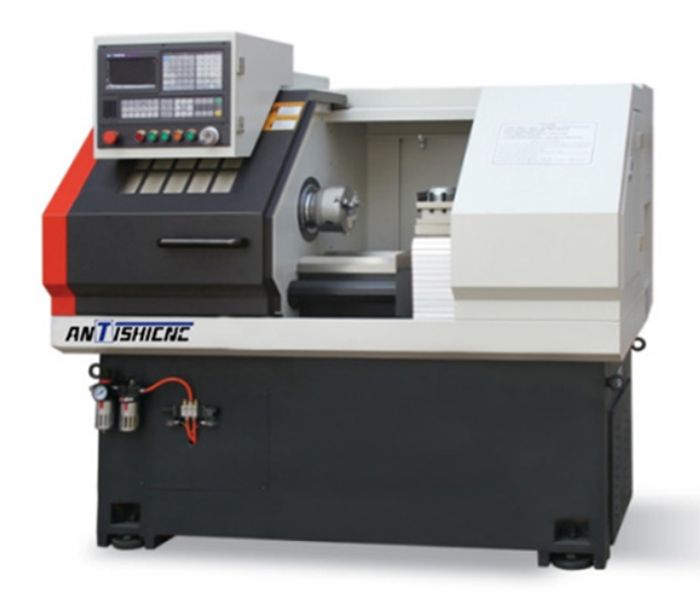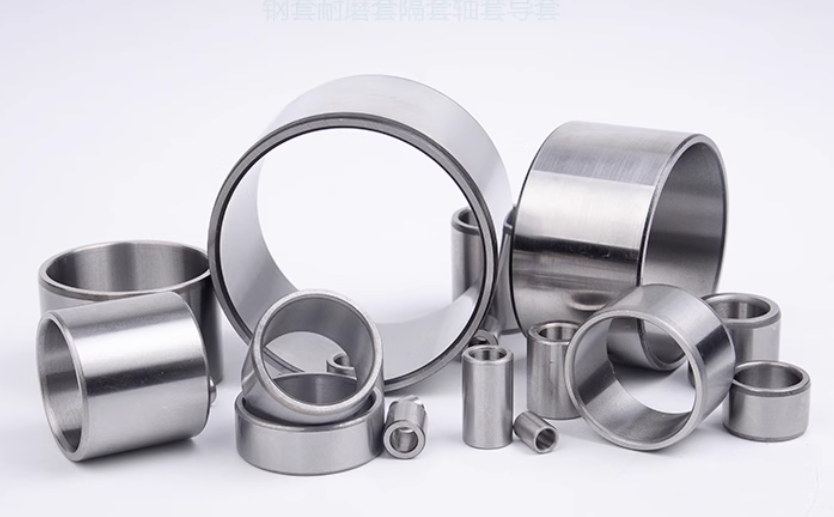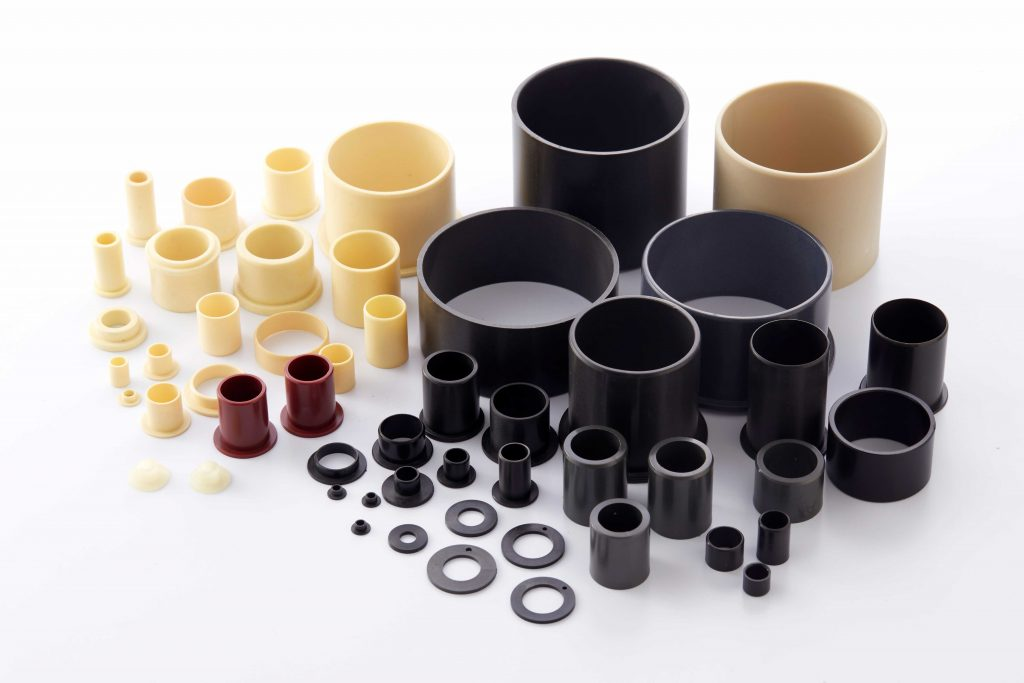CNC lathe is a kind of high-precision processing equipment, which can be used to process various parts. Shaft parts, sets of parts, thread turning process, special profile parts, comprehensive parts, such as: bearing bush, bearing bush is a common mechanical parts, usually used to support and fix the rotating shaft, reduce friction and wear between the shaft and other parts, in many devices play a vital role in the next by the engineers of the Shanghai Anticipation Machinery Equipment Co. Metal bearing bush.

1.Introduction of bearing bush
| Bearing bush | |
|
Structural characteristics |
The bearing bush is generally cylindrical, with an inner hole and an outer circle. The diameter of the bore matches the diameter of the shaft, while the outer circle is adapted to the diameter of the hole in the mounting part. The length of the bearing sleeve depends on the specific requirements of use, and can be a short sleeve or a longer tube. |
|
Material selection |
Metal Materials
Commonly used metal materials include copper alloys, aluminium alloys, cast iron and steel. These materials have high strength and hardness and can withstand large loads and friction. For example, copper alloy bearing bushings have good wear resistance and thermal conductivity and are suitable for shafts rotating at high speeds; steel bearing bushings have high strength and toughness and are suitable for shafts under heavy loads and harsh working environments.
|
| Non-metallic materials
Non-metallic materials such as plastic and rubber can also be used to make bearing bushings. These materials have the advantages of light weight, corrosion resistance, insulation and so on. For example, plastic bearing bush is suitable for some occasions which require low coefficient of friction and no lubrication; rubber bearing bush has good vibration damping and sealing performance.
|
|
|
Function |
Supporting the shaft
The bearing sleeve provides stable support for the shaft, ensuring that the shaft remains in the correct position and orientation during rotation. It is capable of supporting the weight of the shaft and loads from external sources, preventing the shaft from bending or deforming. |
| Reducing friction and wear
The fit between the bearing bush and the shaft is usually a clearance fit or a transition fit, which enables the shaft to slide or roll relative to the bearing bush during rotation. In order to reduce friction and wear, the inner surface of the bearing bush is usually treated with special treatment, such as chromium plating, copper plating, spraying wear-resistant materials, and so on. |
|
| Protecting the shaft and other components
The bearing sleeve prevents direct contact between the shaft and other components, preventing the shaft from being worn or damaged. At the same time, it protects other components from shaft friction and impact, extending the life of the entire mechanical system. |
|
|
Application area |
Bearing bush is widely used in various mechanical equipment, such as automobiles, machine tools, motors, fans, pumps and so on. In these equipments, bearing bush plays a vital role to ensure the normal operation and reliability of the equipment. |
2.Processing flow
1) Preparation before processing
Drawing analysis
Carefully study the drawings of the bearing bush, clarify the dimensions, tolerances, surface roughness requirements and machining process. Determine the difficulty and focus of machining, for the subsequent machining process to be fully prepared.
Material selection
According to the requirements of the use of the bearing bush and the working environment, choose the appropriate material. Common materials include carbon steel, alloy steel, stainless steel and so on. Ensure that the quality and performance of the material meet the machining requirements.
Tool preparation
Select the appropriate tool according to the machining process. For cylindrical machining, choose carbide cylindrical turning tool; for internal hole machining, choose internal hole turning tool. At the same time, prepare cutting tools, threading tools and other tools to meet different processing needs.
CNC programming
According to the drawing requirements and machining process, carry out CNC programming. Programming should consider the tool path, cutting parameters, feed speed and other factors to ensure the accuracy and efficiency of machining. Manual programming or automatic programming software can be used for programming.

2) Machining process
Workpiece clamping
Use suitable fixtures to clamp the bearing bush blank on the CNC lathe. Ensure that the workpiece is firmly clamped and will not move or be deformed during the machining process. For small bearing bush, you can use three-jaw chuck for clamping; for large bearing bush, you can use four-jaw chuck or special fixture for clamping.
Roughing outer circle
Start the CNC lathe, select the appropriate cutting parameters, rough machining of the outer circle. The purpose of rough machining is to remove most of the residual amount, leaving the appropriate machining allowance for subsequent finishing. In the roughing process, pay attention to observe the cutting situation and adjust the cutting parameters in a timely manner to ensure the safety and efficiency of machining.
Finishing cylindrical
After the completion of rough machining, carry out external finishing. Adjust the cutting parameters, reduce the feed rate and depth of cut, and improve the surface roughness. Use the gauge to measure the dimensions of the outer circle after machining to ensure that the dimensional accuracy meets the requirements.
Bore machining
Use a bore turning tool to machine the bore. Again roughing is carried out first to remove most of the residue and then finishing is carried out. When machining the internal hole, pay attention to the tool’s extension length and the selection of cutting parameters, in order to prevent tool breakage and machining deformation.
Machining end face
Use the end face turning tool to machine the two end faces of the bearing bush to ensure the flatness and perpendicularity of the end face. When machining the end face, pay attention to the feeding direction of the tool and the selection of cutting parameters to ensure the machining quality.
Cutting
After completing all the machining processes, use the cutter to cut off the bearing bush from the blank. When cutting, pay attention to the feed speed of the tool and the depth of cut to prevent the tool from breaking and deformation of the workpiece.
3) Post-processing
Inspection
Inspection of the finished bearing bush, including dimensional accuracy, surface roughness, form and position tolerance and other aspects of the inspection. Use gauges, roughness meters and other testing tools to test to ensure that the parts meet the design requirements.
Cleaning
The finished bearing bush is cleaned to remove the oil and chips on the surface. Cleaning agent and cleaning equipment can be used to clean to ensure that the surface of the parts is clean.
Anti-corrosion treatment
Carry out anti-rust treatment on the cleaned bearing bush to prevent the parts from rusting during storage and transport. You can use anti-rust oil, rust inhibitor and so on to prevent rust treatment.
In short, the use of CNC lathe machining bearing bushings need to carry out adequate preparation, operate in strict accordance with the machining process, and carry out inspection and treatment after machining to ensure that the quality and performance of the parts meet the requirements.
Keywords: Lathe,CNC lathe,Flat bed CNC lathe




